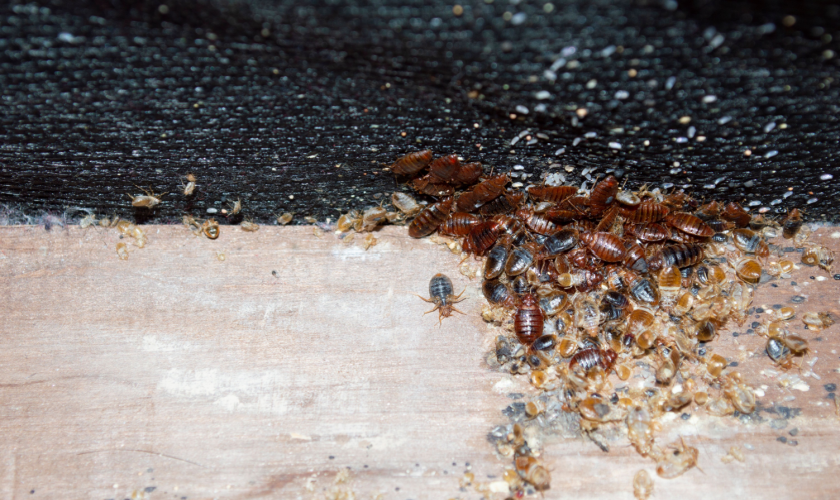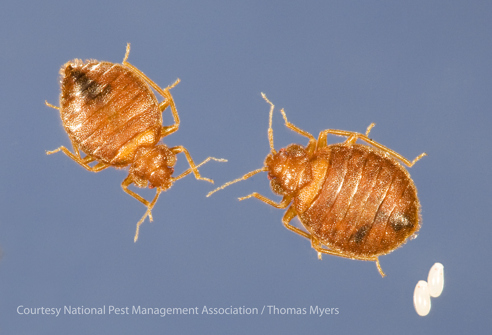Discover the Different Types of Parasite and Their Therapy Options for Effective Administration
The administration of bugs in both farming and residential setups requires a comprehensive understanding of the numerous kinds that can attack these environments, in addition to the treatment alternatives readily available for effective control. From household rodents that position health dangers to garden bugs that threaten crop returns, each category demands a customized method. Understanding the subtleties of pest behavior and the matching treatments is important; nonetheless, the concern remains: what are one of the most efficient strategies that not only deal with existing infestations however likewise protect against future occurrences?

Usual Family Vermin
Although house parasites can differ substantially in type and behavior, numerous share typical attributes that make them a problem. Common house parasites consist of rats such as rats and computer mice, pests like cockroaches and ants, and occasional invaders such as spiders and flies. These pests typically flourish in settings that give very easy access to food, water, and sanctuary, making homes specifically at risk.
Rats, as an example, are well-known for causing structural damages and spreading disease. They can munch via electric cords, possibly leading to fire hazards. Pests like cockroaches are not just troubling but can also trigger allergies and asthma in sensitive people. Ants, while typically harmless, can attack cooking areas, providing food sources unappealing.
Reliable pest monitoring begins with avoidance, that includes securing access points, keeping tidiness, and making use of proper storage space techniques for food. Checking for signs of infestation is vital, as very early discovery can protect against extra considerable issues. When invasions take place, various control methods exist, varying from traps and baits to professional elimination solutions. Comprehending the behaviors and attributes of these typical home pests is essential for effective management and keeping a healthy living atmosphere.
Yard Bugs and Their Effect
Yard pests present a significant hazard to the health and wellness and performance of plants, with some price quotes recommending that they can trigger as much as 40% of crop losses in particular areas. These pests, that include pests such as beetles, caterpillars, and aphids, in addition to nematodes, can cause serious damages by feeding on plant tissues, resulting in stunted development, lowered returns, and endangered high quality.
The influence of garden parasites prolongs beyond plain visual worries; they can disrupt ecological communities by modifying food web, affecting pollinators, and spreading out diseases among plants. As an example, parasites like the spider mite can compromise plants, making them extra susceptible to fungal infections. Additionally, invasive species might outcompete native flora, resulting in biodiversity loss.
Integrated Bug Administration (IPM) techniques, which incorporate biological control, social methods, and targeted chemical applications, can give sustainable options. By recognizing the particular bugs and their actions, garden enthusiasts can carry out targeted therapies that not only protect their plants but also promote a much healthier yard ecosystem.
Rats: Recognition and Risks
Rats prevail garden pests that can pose considerable threats to plant health and total environment security. These tiny creatures, consisting of species such as rats, computer mice, and voles, are often identified by their sharp incisor teeth and durable bodies. Their hair coloration varies extensively, ranging from gray to brownish, and they generally show a lengthy tail which aids in equilibrium and dexterity.
The risks linked with rodent problems are diverse. Firstly, they can create substantial damage to crops and gardens by gnawing on stems, roots, and fruits, which can bring about substantial economic loss for gardeners and here are the findings farmers. Rodents are well-known for their function as vectors of different diseases, including hantavirus and leptospirosis, which can be sent to animals and human beings (bed bug heat treatment). Their droppings and pee can contaminate dirt and water sources, exacerbating wellness dangers.
Furthermore, rats can interrupt the all-natural equilibrium of neighborhood ecosystems by taking on indigenous wild animals for resources. Their burrowing routines can bring about soil disintegration and destabilization of plant roots. Very early recognition and understanding of rodent actions and risks are vital for reliable parasite management.
Reliable Treatment Techniques
When handling rodent invasions, utilizing effective treatment techniques is important for reducing damage and wellness dangers. A multi-faceted method commonly produces the most effective results. First of all, catches are an essential part of rodent control. Break traps and digital catches give a fast and humane means to get rid of rodents, while glue traps can aid monitor activity levels.
Second of all, bait stations containing rodenticides can be tactically positioned in locations of high rodent activity. These stations ought to be tamper-resistant to ensure the security of non-target pets and children. It is crucial to choose the ideal lure kind, as rats can develop bait hostility otherwise altered periodically.
In addition to catches and bait, sealing entry points can substantially lower the opportunities of re-infestation. This includes evaluating and fixing gaps in doors, home windows, and wall surfaces.
Finally, expert bug control services can be beneficial for considerable invasions. They have the know-how, tools, and products essential for effective eradication and can develop a customized administration strategy. By applying these therapy methods, building proprietors can effectively deal with rodent issues and shield their health and wellness and home.
Preventative Measures and Tips

Keeping tidiness is equally essential; guarantee that food is kept click here to find out more in impermeable containers and without delay tidy up crumbs or spills. Regularly getting rid of waste and making certain that compost heap are taken care of correctly can prevent parasites from being brought in to your home.
Furthermore, take into consideration landscaping practices that dissuade rodent habitation. Trim back plants and maintain mulch away from the foundation of your residential or commercial property, as these can give hiding spots for bugs.
Conclusion
Efficient insect administration demands a detailed understanding of various bug kinds and their certain therapy choices. Customized approaches for house pests, yard pests, and occasional intruders are necessary for reducing threats and boosting control actions. By incorporating effective treatment approaches with preventative strategies, such as regular assessments and maintaining cleanliness, the likelihood of problems can be dramatically minimized. Inevitably, a proactive stance on parasite administration fosters a much healthier environment, guarding both agricultural and property spaces from pest-related difficulties.
Typical family insects include rodents such as computer mice and rats, bugs like roaches and ants, and periodic invaders such as crawlers and flies.Rats are common yard pests that can posture considerable risks to plant health and total ecological community stability. Early identification and understanding of rodent actions and risks are crucial for effective parasite management.
Effective insect monitoring starts long prior to a problem takes place, with aggressive steps that can substantially lower the likelihood of rodent access and habitation.Efficient parasite management demands a detailed understanding of different insect types and their certain treatment options.